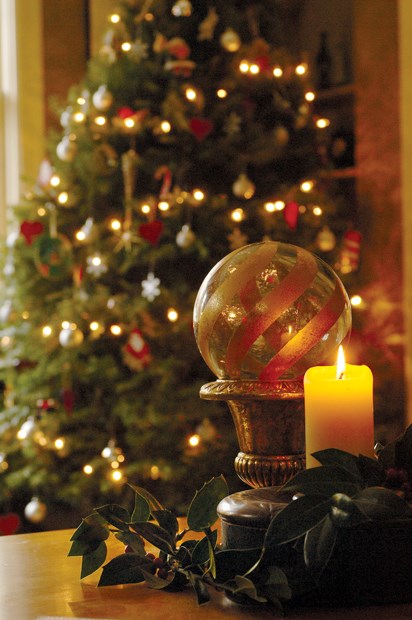Have you ever heard of a Victorian kissing ball?
No, it's not a dance where you kiss everyone you meet. Nor is it a glass ball that you kiss when you need good luck, akin to kissing the Blarney Stone in Ireland.
A Victorian kissing ball is a Christmas decoration that is composed of greens, berries and attractive foliage that is an alternative to mistletoe. Each time you kiss someone under the ball, you remove one berry from the ball.
No, I am not going to tell you how to make a kissing ball - that's way too fluffy for me. But it got me to thinking about Christmas decorations and rituals that originated in our distant past but remain with us today, albeit changed to suit the modern paradigm.
A good example would be the use of holly for seasonal decoration. Approximately 2,000 years ago holly was planted by Druids and Celtics in hedgerows around farming fields. The premise was that the prickly leaves and spiritual power of holly would keep away evil spirits and witches. Today of course we use holly simply for decoration. Or do we?
The celebration of Christmas holidays originally began as a naive reverence for false gods. Originally called Saturnalia, the festival gained popularity under the Roman pagans, as well as Celtics and Druids around AD 100. The festival was practised to honour Saturn, the Roman god of farming and harvest.
Shortly thereafter, the Roman Catholic Church co-opted Saturnalia and made the festival its own holiday in an effort to convert the growing numbers of pagans to Catholicism.
Romans also used the festival to pray to the god of the sun, Sol, to return light to the world.
The modern tradition of Christmas in the 20th and 21st centuries has morphed into an orgy of capitalistic excess and consumption where many businesses attain a large part of their year-end sales targets.
Mistletoe, which is widely used at Christmas, was originally used by the early Druids of Europe for ceremonial purposes. The genus Viscum is generally attributed to being the mistletoe of lore. It is a parasitic plant that grows on the branches and bark of host trees such as ash, linden, occasionally oak, hawthorn, and some conifers and fruit trees.
Mistletoe has also been used medicinally as a tonic to prevent spasms and as a narcotic. It is important to note that mistletoe is generally considered poisonous, especially to children and it should never be ingested.
Druids would harvest mistletoe according to the cycles of the moon and used the plant in ceremonial sacrifice and for protection from evil spirits.
Somewhere through the centuries, the Scandinavian legend of Balder the peace god, who was killed by mistletoe, was resurrected and the gods decreed that all who passed under mistletoe should receive a kiss under the plant out of reverence for Balder's resurrection and as a symbol of love.
Today, mistletoe thrives in our Christmas lore as the lover's leaf because after all, who doesn't like a kiss?
Some other interesting Christmas traditions from around the world include the Christmas pickle, which is said to have originated in parts of southern Europe, particularly Spain. The pickle lore goes something like this: Parents hide a pickle in the Christmas tree before decorating the tree. After the tree is decorated, children search the tree to find the pickle. The child who finds the pickle first would receive extra candy and gifts.
Another strange Christmas tradition comes from Italy where La Befana, the Christmas witch, would deliver gifts to children on Jan. 5, known as Epiphany Eve. Italian children would leave out wine and food for La Befana. I think we should change our current Western ritual of leaving milk and cookies out for Santa and children should leave a bottle of wine for mom and dad under the tree.
There is much more Christmas lore from other places in the world. For example, in Japan the favoured Christmas dish is supposedly fried chicken and especially Kentucky Fried Chicken if you can believe that.
And the Japanese avoid red-coloured cards at Christmas because red is the colour of funerals.
From Austria there's the Christmas devil Krampus who supposedly beats naughty children with sticks and branches.
In Scandinavian countries people hide their brooms to prevent evil witches from stealing them and creating havoc.
In recent times, the worthy and honorable tradition of community volunteering or collecting donations for those less fortunate has become a popular substitute for simply buying gifts for friends and family. Arguably, giving back to the community is the most valuable of all Christmas traditions.
Todd Major is a journeyman horticulturist, garden designer and builder, teacher and organic advocate. [email protected]



